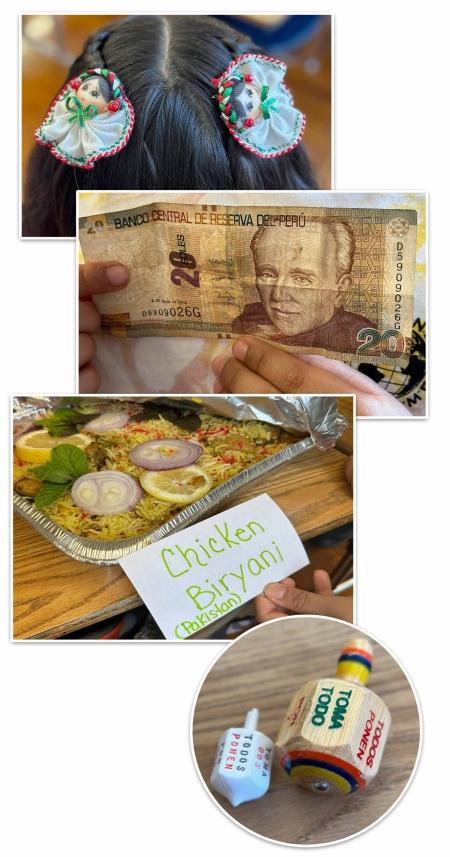
The cultural artifacts students bring to class have included hair barrettes, currency, food and spinning tops.
Our students, especially those at diverse schools, need to feel like they belong in the school community. I developed a museum unit for my 4th-graders that embeds lessons on cultural awareness into our social studies and writing curricula. Over the course of several weeks, students research, create and present a “museum” that showcases each individual student’s culture. The unit culminates in a cultural awareness day.
The museum unit starts at the end of October on the heels of a unit about the world’s cultures, so students begin with a solid understanding of the elements of a culture — a shared language, religion, music and arts, food, clothing and so on — and they are ready to connect what they’ve learned to their home culture. Over the course of a couple of weeks, each student brings in a bag containing two to four artifacts from their own culture to present to the class. Each presentation prompts a short class discussion about the significance of these objects and encourages students to think more deeply about what their artifacts represent. Over the years, I’ve seen some pretty interesting artifacts: maracas, saris, African drums, a Mexican spinning top, coins, engraved jewelry boxes. Some students even bring in a family member who can talk knowledgeably about their home culture!
The next phase of the unit is creating the museum, for which I allow about a week. Each student is responsible for their own exhibit. Before the pandemic, students all used trifold presentation boards to make their exhibits. They pinned or glued pictures and artifacts to the boards and wrote descriptions that explained the significance of each element. For students who struggle with writing, I provide graphic organizers to help them describe their artifact and analyze its importance, with questions such as “What is this object used for? Is it important to your culture or just your family?” Recently, I have started allowing students to choose how they present: Some students still use the trifolds, some prefer to make a slide deck, others create videos, and one student even wrote and performed a rap song.
For the celebratory cultural awareness day at the end of the unit, students bring food from their home cultures for a party, and families are invited to tour the museum exhibits.
I have found that the students are much more engaged when they can connect the worlds of home and school. My students want to talk about the artifacts they have selected, and they are attentive and ask thoughtful questions when their peers are presenting. Our museum unit and the cultural awareness day help the students feel respected and included — which is, after all, a prerequisite for learning.
Shara Breit is a 4th-grade teacher at PS 11 on Staten Island.